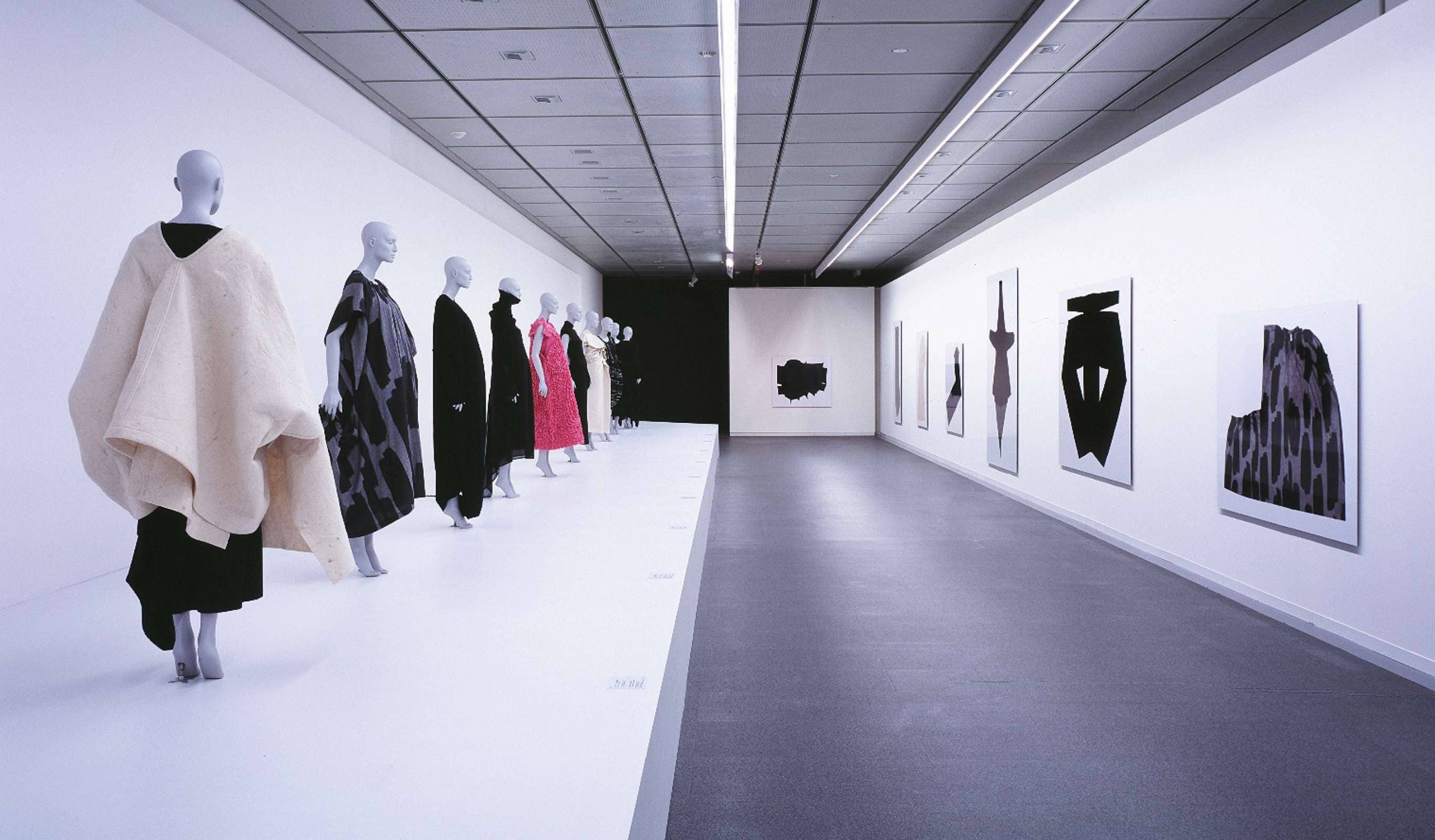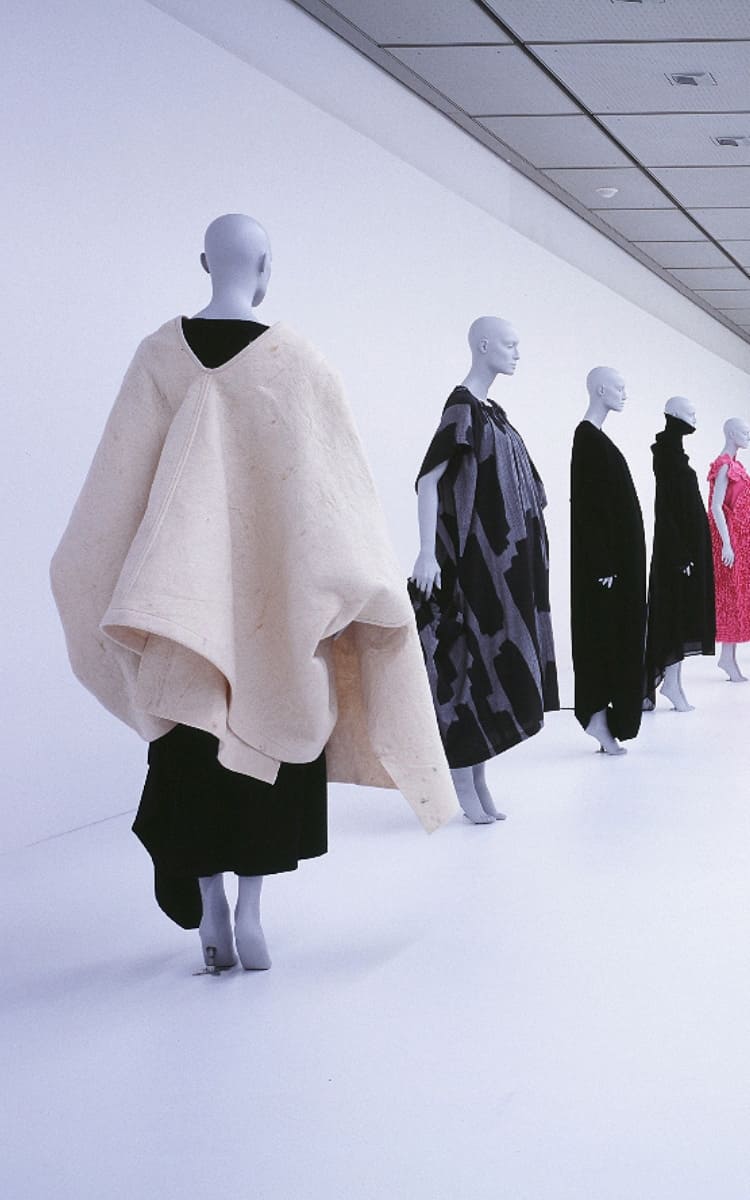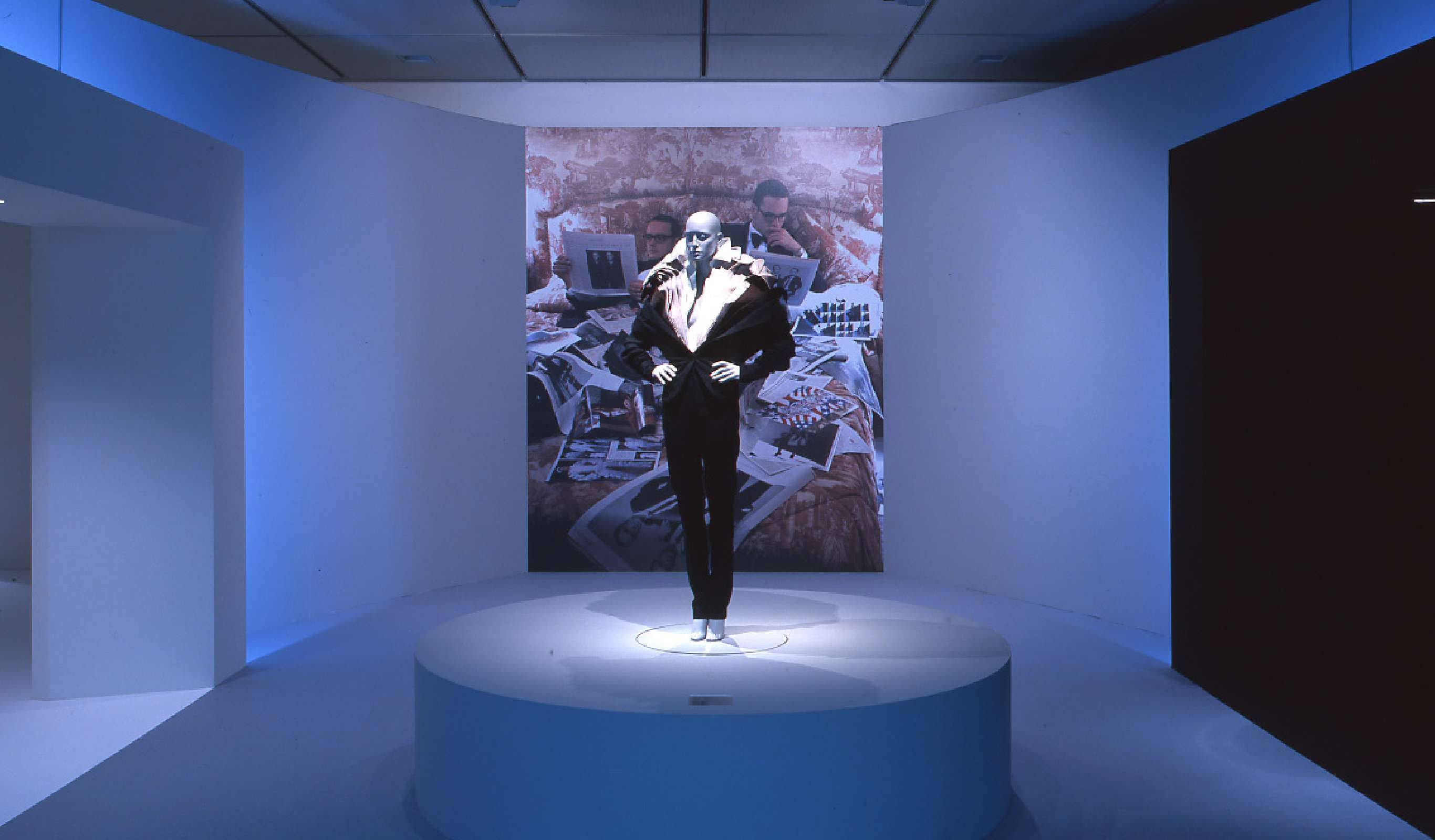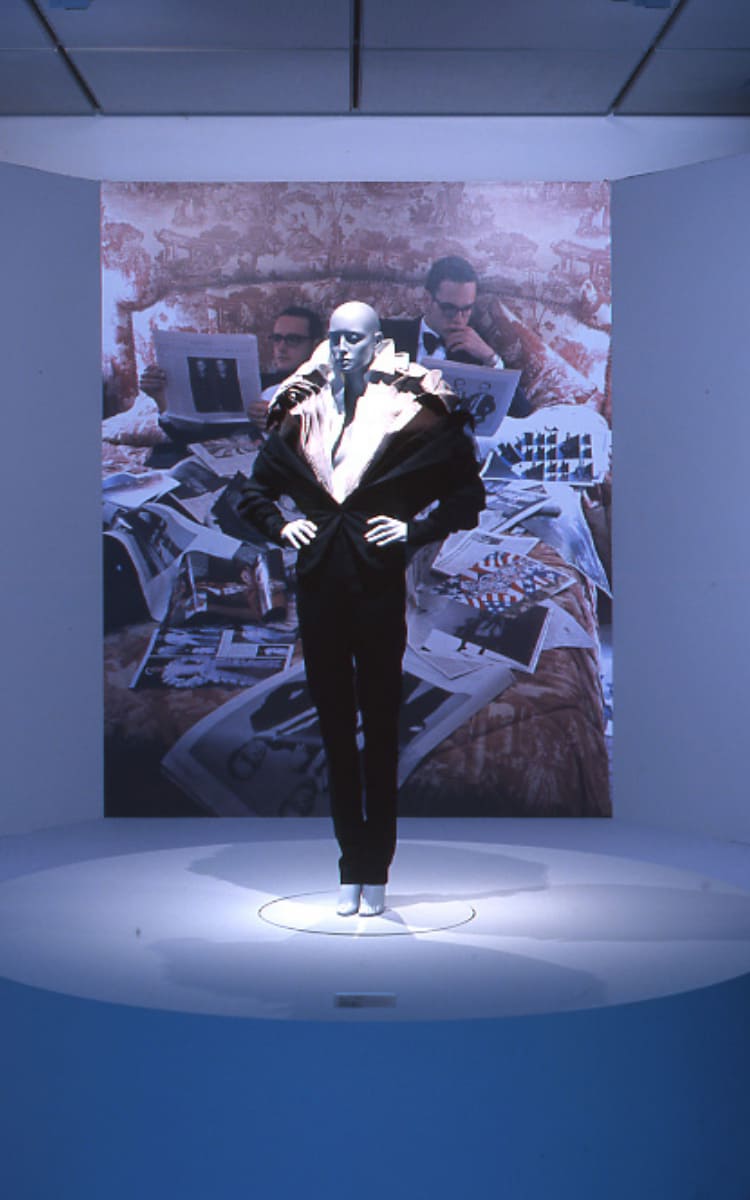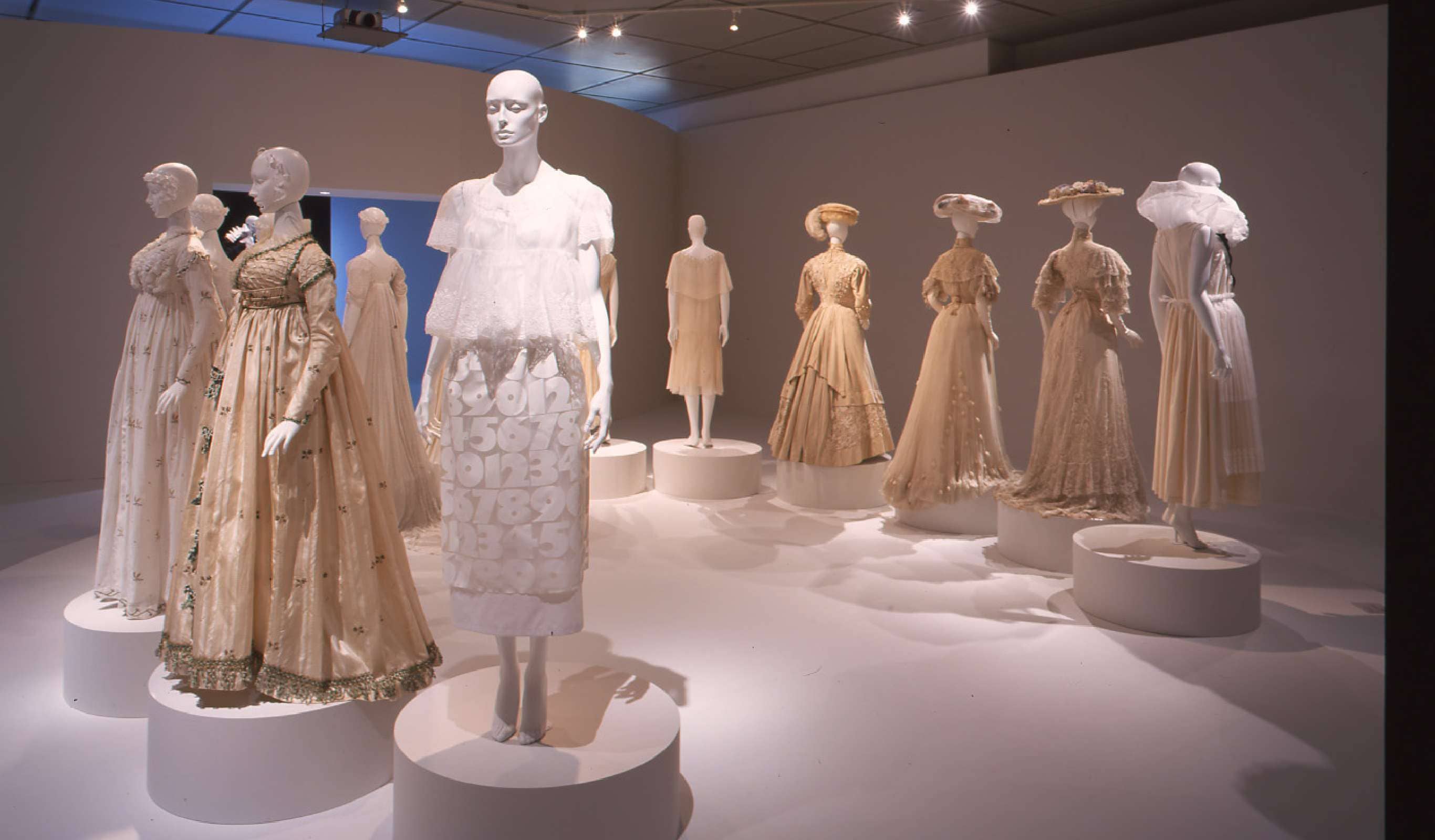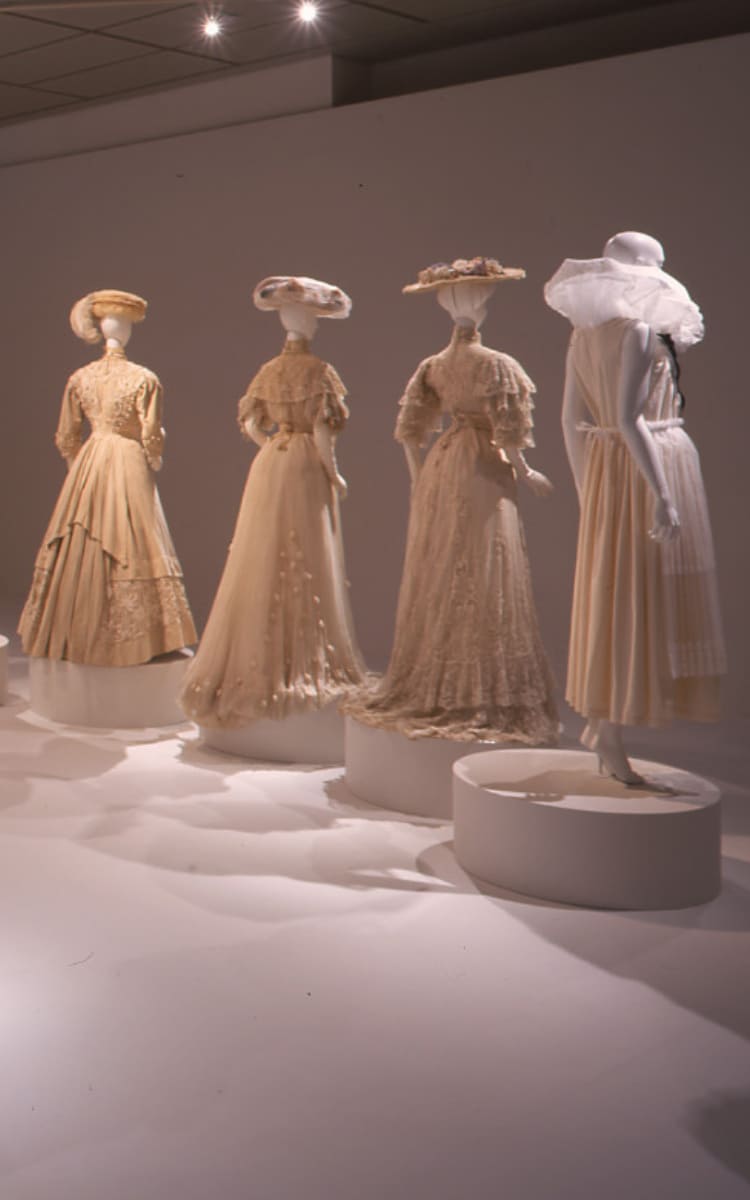![Dress [Left]<br>Dress [Right]](https://www.kci.or.jp/featured/files/photo018.jpg) © The Kyoto Costume Institute, photo by Takashi Hatakeyama
© The Kyoto Costume Institute, photo by Takashi Hatakeyama
Dress [Left]
Dress [Right]c. 1965 [Left]
c. 1968 [Right]
These two ready-to-wear dresses define the relationship between art and fashion in the 1960s.
During the 1960s, with the new mass consumption society in full swing, public attention was seized by the fine arts, including Pop Art, which was based on everyday objects in the mass consumption society and led by Andy Warhol (1928–1987), and Op (optical) Art, which studied and applied optical illusions, with Victor Vasarely (1906–1997) and Bridget Riley (1931–) taking principal roles. In Haute Couture, Yves Saint-Laurent (1936–2008) was among the first to apply those new art styles to fashion design. When reasonably-priced ready-to-wear dresses created a special furor in the just-started prêt-a-porter age, the arts spread in prêt-a-porter as well. Art and fashion were linked again via a new agent, the public, and it looks at the powerful links between the two disciplines since then.
Designerunknown [Left]
Harry Gordon [Right]
Brandunknown [Left]
Posterdress [Right]
Labelnone [Left]
POSTER DRESS [Right]
MaterialWhite and black check-patterned vinyl; Op-Art print; A-line; stand collar and zipper. [Left]
White and black printed non-woven fabric mini-dress. [Right]
Inventory Number(s)AC10221 99-39 [Left]
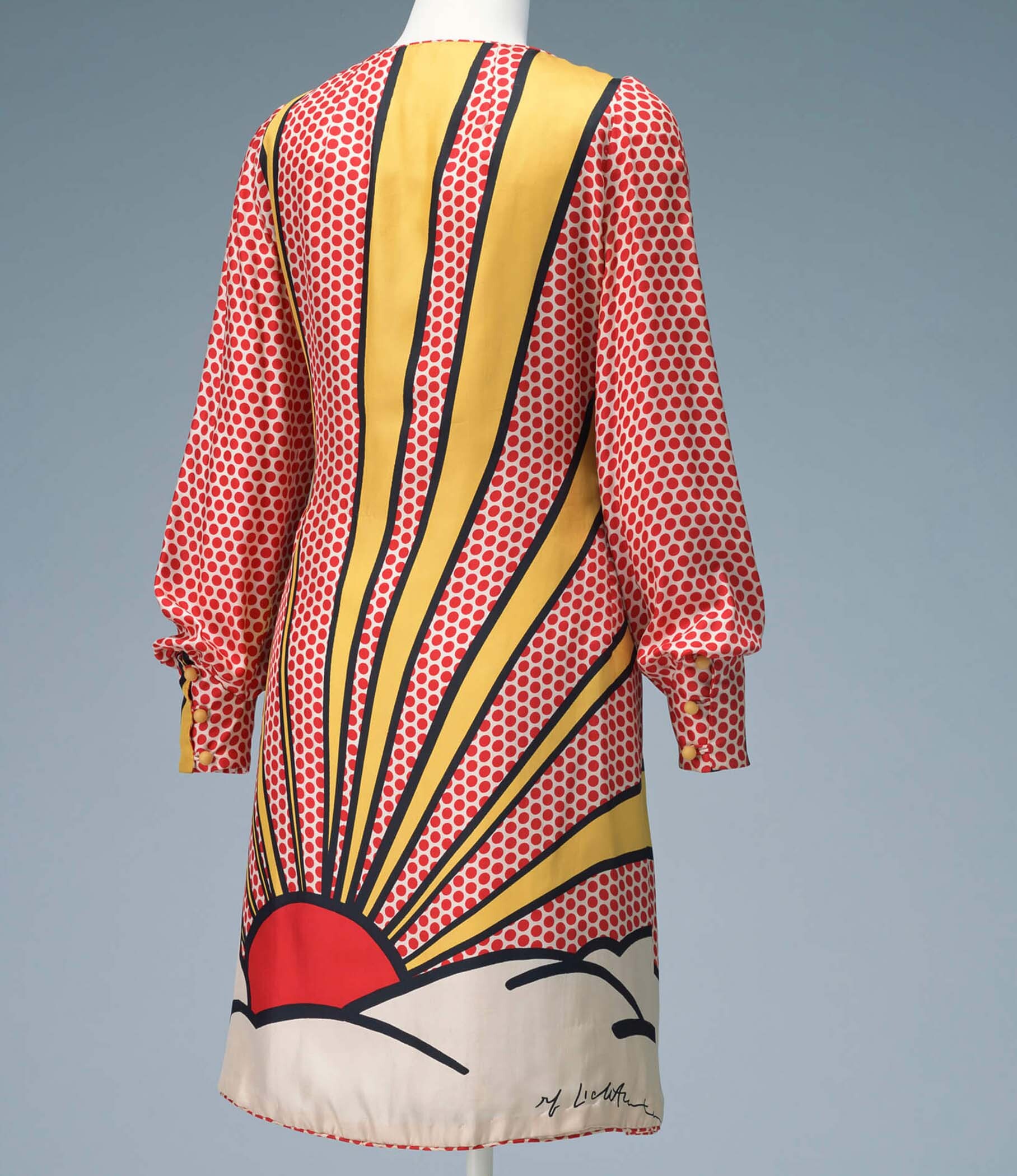 © The Kyoto Costume Institute, photo by Takashi Hatakeyama
© The Kyoto Costume Institute, photo by Takashi Hatakeyama
Dress, Coatc. 1965 - America
Roy Lichtenstein (1923-1997) was one of the key figures from the early days of pop art. His Sunrise (1965) is printed boldly onto the textile that became the back of this dress. In contrast, the accompanying coat is a plain ivory color with no patterning. The outfit caused a stir when worn by Lichtenstein's friend, Letty Lou Eisenhauer, to the opening for the artist's 1965 exhibition at the Galerie Ileana Sonnabend in Paris. Incorporating Lichtenstein's trademark Benday dots and his signature, this was a wearable work of art created at a time when Lichtenstein was the darling of the art world. The dress was effectively a painting, and the coat was simply the white cover that concealed the painting until its time to be revealed, provided only for dramatic effect. In the 1960s art and life approached much closer to each other than ever before. Lichtenstein, Andy Warhol, and other young artists adopted fashion as one of their media, conveying the fresh, exciting atmosphere of that period in a form that could walk out of the gallery and into the city.
DesignerRoy Lichtenstein (Textile), Lee Rudd Simpson
Labelroy Lichtenstein
MaterialWhite satin one-piece dress, silk-screen printed by Roy LICHTEMSTEIN. Dotted in red all over and the rising sun and clouds on the back. Front and left side opening. Ivory silk satin coat with left side front opening by buttons.
Inventory Number(s)AC11545 2006-14AB
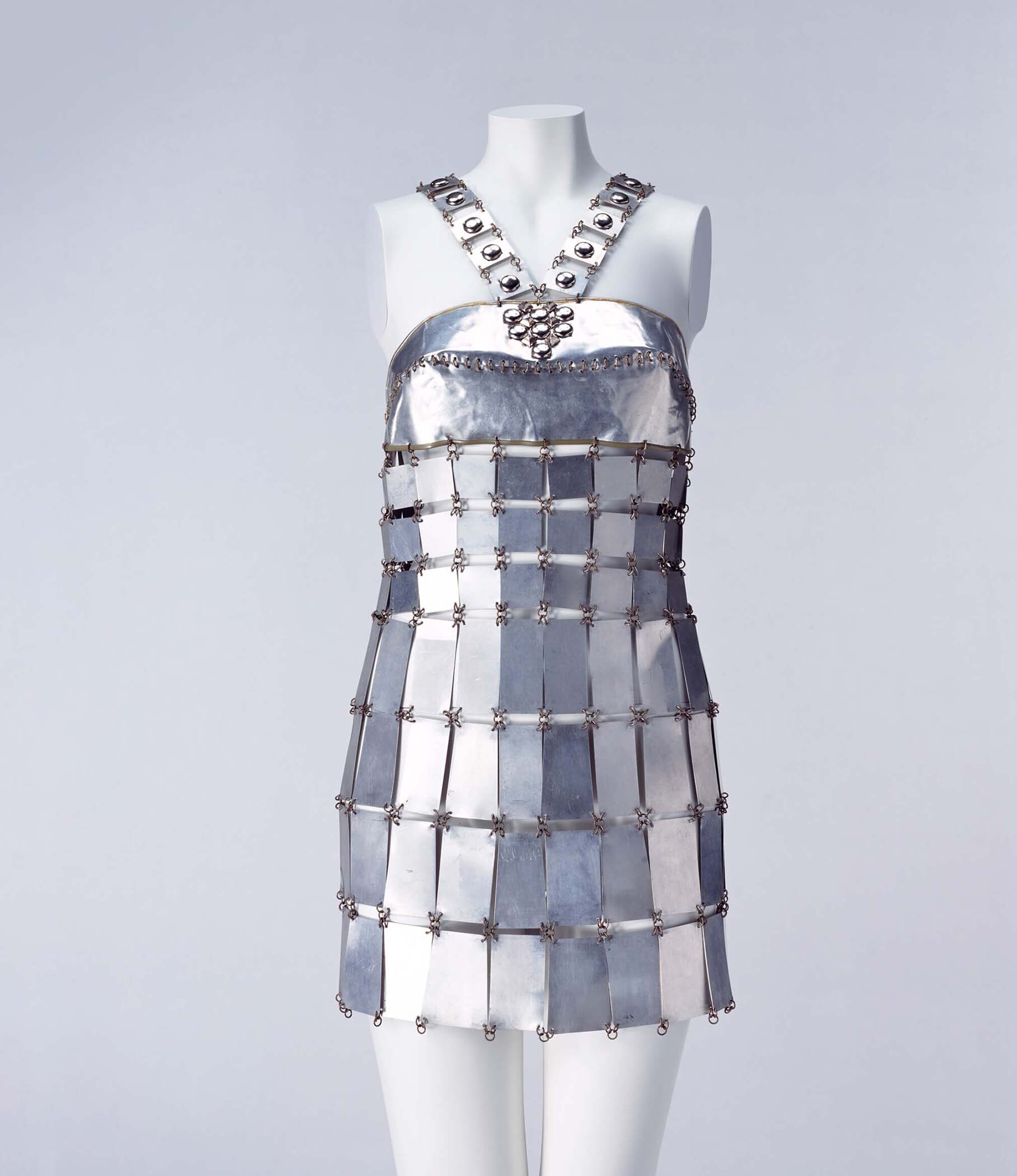 © The Kyoto Costume Institute, photo by Takashi Hatakeyama
© The Kyoto Costume Institute, photo by Takashi Hatakeyama
Dressc. 1967
This mini dress made of aluminum plates sums up work of Paco Rabanne, known as the "Metal Worker." The inorganic metal "fabric" makes a striking contrast against the skin. It is one of the monumental dresses of the 1960s, implicating of androids' glowing hard skin in science fiction.
In the 1960s, people in every field made innovative use of new technologies, abandoning traditional techniques and materials, against the backdrop of remarkable achievements made by the space engineering and other advanced sciences. Paco overturned the common understanding that clothes had to use thread and fabric, and shocked many by using plastic for the dress in 1966. Using other new materials including metals and nonwoven fabric, since then, he gained fame in the late of 1960s.
DesignerPaco Rabanne
BrandPaco Rabanne
Labelnone
MaterialMini dress made of aluminum plates and brass wire.
Inventory Number(s)AC9472 97-23-3
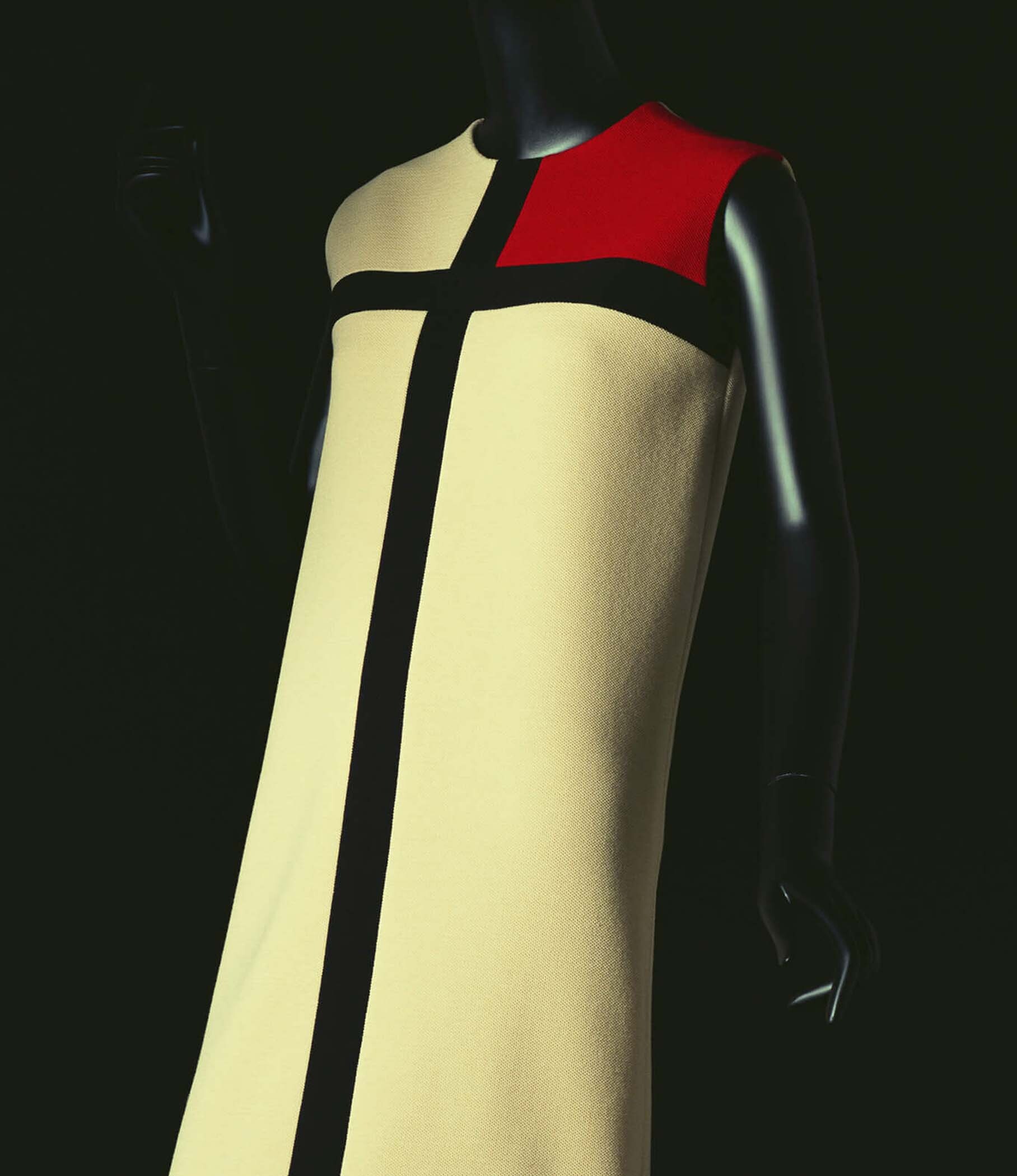 © The Kyoto Costume Institute, photo by Taishi Hirokawa
© The Kyoto Costume Institute, photo by Taishi Hirokawa
Dress "Mondrian"Autumn/Winter 1965
This dress is a masterpiece by Yves Saint-Laurent, a leading designer of the 20th century. A straight A-line dress with boldly set primary colors, bordered by black straight lines, was created after "Compositions," famous paintings by the Dutch painter Piet Mondrian (1872–1944). The abstract painting, composed of separate blocks of white, red and black on the canvas, could be applied directly to the dress by set up with jersey pieces woven by the Racine machine. Although the form is very simple, the body lines of the woman who wears it loom out in subtle. We can glimpse the highly sophisticated cutting techniques of Haute Couture designers. Saint-Laurent was known as an art collector. "Compositions" was in his possession as well.
After quitting from Christian Dior, Saint-Laurent launched his own fashion house in 1961, when he was only 25 years old. During the period when haute couture competed with the emerging prêt-a-porter and fashion trends were shifting, Saint-Laurent found out precisely what was required by the new age and released novel designs. In 1966, the year following the presentation of this dress, he opened a prêt-a-porter boutique in the left banks of Paris. He gained worldwide popularity with new elegance that matched everyday lives, such as A-line mini dresses and pants, and led the fashion trends in the late 20th century.
DesignerYves Saint Laurent
BrandYves Saint LaurentLabelYVES SAINT LAURENT PARIS
MaterialOne-piece dress of white, red, and black wool jersey by Racine.
Inventory Number(s)AC5626 87-18-1

